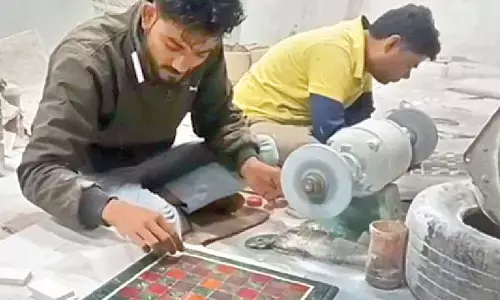Designing for a sustainable future

Designing for a sustainable future
According to The World Commission on Environment and Development, sustainable design or development is one that meets the needs of the present without compromising the ability of future generations to meet their own needs.
One of the biggest challenges we face today as a collective whole is sustainable development. The resources we have are finite, available in limited quantities. Our needs, however, as a growing population are rapidly increasing. As we continue to consume, we are encroaching upon resources that are gradually depleting.
There is no denying the fact that we are experiencing the effects of global warming, environmental degradation and climate change around us. In this context, it has become more important than ever before to understand the implications of our decisions as consumers and contributors to the environment that we live in. As we witnessed alarming levels of pollution in the national capital in the past few days, our attention has been brought back to our surroundings and the world that we reside in.
As we work towards fulfilling the needs of the end user with greater efficiency and efficacy, the needs of the planet at times get left behind. According to The World Commission on Environment and Development, sustainable design or development is one that 'meets the needs of the present without compromising the ability of future generations to meet their own needs'.
Right from how we use the resources that are available to us to creating a more sustainable future, designers are constantly exploring new ways to solve the dichotomy of how limited resources can satiate the infinite demand for them. However, the onus does not solely lie with the designer or manufacturers and producers of the products we use. It is also equally, if not more, our responsibility as consumers, as citizens and as part of the larger ecosystem to better understand the effects of our decisions. This is the first and most essential step towards a more sustainable future.
In recent times there has been an increasing awareness about the consequences of our choices, particularly what we choose to consume and how we dispose of our products at an individual and societal level. The age we live in is both blessed and cursed by the one omnipresent influence in our life - social media. While this is a great medium to raise awareness, it is equally important that we practice a more sustainable way of living and working as well.
In the process of manufacturing new products, companies and designers alike can advocate for the use of greener and more eco-friendly materials. This not only helps in minimizing energy consumption and waste production but it also goes a long way in optimising any given product's life cycle. Avoiding chemicals, using recyclable and easily decomposable materials, taking into consideration transport and operation are all imperative facets that need to be thought about when designing and manufacturing a product - whether it is a piece of clothing or furniture or even an advertisement.
Change, of course, starts with the right kind of education. Equipping the youth of tomorrow with not only the knowledge and awareness of their surroundings but also the skills and aptitude to design equitable solutions to the problems we face as a society is imperative. Creating a new generation of designers, who are conscious, empathetic, ethical and innovative is more important than ever before.
With the kind of multi-disciplinary learning, hands-on approach to problem solving and a practical outlook that colleges are now espousing in their pedagogy, the future looks bright, one where we can live in harmony with our surroundings, one where the impacts of our decisions do not weigh heavily on the environment that nurtures us.
(The author is a Director of Indian Institute of Art and Design (IIAD))


















